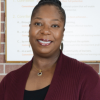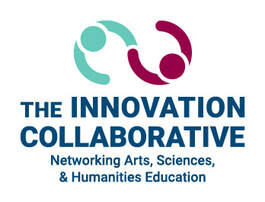 By Sharon Delesbore, PhD, Collaborative Board Member Sharon Delesbore, PhD, is a Collaborative Board member and President of the Association for Multicultural Science Education, an affiliate of National Science Teaching Association (NSTA). She also is Asst. Principal, LV Hightower High School, in Ft. Bend ISD, Missouri City, TX. This article is an adaptation of a blog she was invited to write for the STEM Teacher Leadership Network. This network is an NSTA affiliate that focuses on improving schools, policy, and the future of STEM education. As the Collaborative focuses on serving the needs of diverse populations, this article points out the importance of equity, diversity, and inclusion in science education. I must preface this piece with honesty. It was difficult for me to pull my thoughts together to write given the many incidents of injustice, white privilege and racism that remind us of the continued inequities in our society. In an effort to create an America of equality, we, as a nation, have worked hard not to offend “others”. When I say “others”, I mean the different groups of people who have felt neglected, negated, and punished for not fitting into the idealized image of being an “American” that is commonly communicated by our mainstream and social media. Truthfully, this country’s forefathers created a document framed in biased ideologies. Their definition of being “created equal” was limited to white men of financial means. It is 2021 and things have changed, with new, courageous voices speaking up, asserting that individuals and organizations must become self-reflective practitioners and conscientious reformers willing to meet the challenges of creating equity in all aspects of our society. The need for equity is most pressing in the education of our students, including in science education. Our work to create equity in science education will not come to fruition until educators recognize and realize that the work starts from within. Are we truly ready to look ourselves in the mirror and ask tough questions that go to the root of our beliefs about how we think about all people, whether black, white, Hispanic, Indian, male, female, rich, poor, disabled, or gifted? I am speaking particularly of and to anyone who feels that they have not been represented with dignity. I am speaking of and to anyone who believes that they do not have a seat at the table of decision-making. I invite you to pull up your own chair because your thoughts are valued and your input wanted. For any conversation to begin, I always like to start with an operational definition of words. There are many shared definitions of diversity, equity and inclusion; the ones I’m sharing here are but one example. Diversity refers to the demographic subgroups within educational institutions. The Next Generation Science Standards (NGSS), released in April 2013, identified student diversity through seven case studies noted in Appendix D – “All Standards, All Students: Making the Next Generation Science Standards Accessible to All Students". The four accountability groups defined in No Child Left Behind (NCLB) Act of 2001 and the reauthorized Elementary and Secondary Education Act [ESEA], Section 1111(b)(2)(C)(v) were;
Further, student diversity is extended by adding three groups:
Equity is the intentional consideration, formulation, and implementation of practices, policies, and procedures within an organization to deter systemic biases that can hinder the measurable outcome of programming as well as create barriers that can affect student achievement within demographic subgroups in comparison to institutional expectations and performance standards. Equity fosters accountability between stakeholders involved in the decision-making process and those designated to perform within the organization. A conscientious, equitable mindset can help begin the process of desegregating and reversing bias implications of practice. To create equity in science education will demand individual and corporate reflection that includes asking some tough, fundamental questions. One strategy that might help is the application of the A-List Approach©, which was developed by Dr. Delesbore to create equitable opportunities in science education for all students. It can address this dilemma by:
Creating equity in science education is a ginormous undertaking. As scientists, we thrive in data. The challenge is reminding decision-makers our students are the deliverable outcome of the curriculum we develop, time we invest, budgets we anticipate, and futures that we hold in the palm of our hands. Every decision we make determines the destiny of every child. We must take the blinders off, remove bias, prejudice, and racism from the equations that we formulate in our society to ensure that all students have the same opportunity to excel and contribute to our America, whether in science or whatever endeavor they pursue, given the educational opportunity they so richly and equally deserve. About the Author: Dr. Sharon Delesbore is the president of the Association for Multicultural Science Education (AMSE), an affiliate organization of the National Science Teaching Association. AMSE was organized to stimulate and promote science teaching to students of culturally diverse backgrounds and to motivate such students to consider science-related careers; to explore and promote the improvement of science curriculum, educational systems and teaching methods in school; to assist such stimulation; to recruit and involve teachers of all minorities in science education; and to initiate and engage in activities and programs to further improve the science education of culturally diverse students.
0 Comments
Your comment will be posted after it is approved.
Leave a Reply. |
